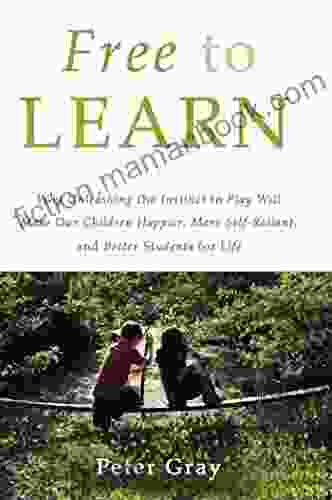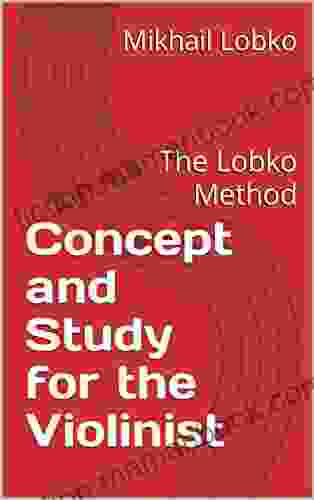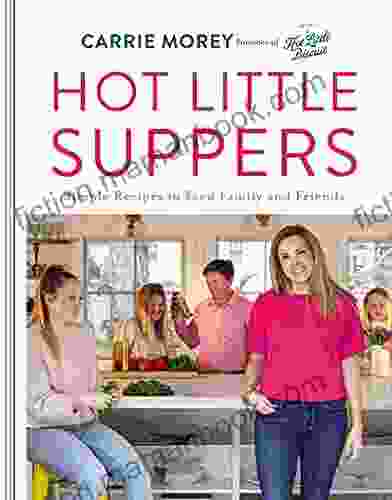The Violinist's Journey: A Comprehensive Guide to Concept and Study

4.7 out of 5
| Language | : | English |
| File size | : | 1416 KB |
| Text-to-Speech | : | Enabled |
| Screen Reader | : | Supported |
| Enhanced typesetting | : | Enabled |
| Print length | : | 106 pages |
| Lending | : | Enabled |
The violin, with its enchanting melodies, captivating harmonies, and expressive capabilities, has captivated hearts and souls for centuries. Its exquisite sound, produced by the friction of a bow against its taut strings, has the power to evoke a wide range of emotions, from joy to sorrow, from tranquility to passion.
Mastering the violin is a journey that requires dedication, practice, and a deep understanding of its concepts and techniques. In this article, we will delve into the intricacies of violin playing, exploring its history, construction, playing techniques, musical styles, and the qualities that make a great violinist.
A Brief History of the Violin
The violin's origins can be traced back to the early 16th century in Northern Italy. It evolved from earlier bowed instruments, such as the rebec and the vielle, and quickly gained popularity due to its versatility, portability, and expressive capabilities.
The early violins were crafted by skilled artisans, such as Andrea Amati and Gasparo da Salò, who established the basic design and proportions of the instrument that have remained largely unchanged to this day.
The Construction of the Violin
The violin is a marvel of craftsmanship, composed of over 70 individual pieces of wood. The main components include:
- The body: The violin's body, also known as the corpus, is made of two arched wooden plates, the top (belly) and the back, which are joined by ribs. The belly is made of spruce, while the back and ribs are typically made of maple.
- The neck: The neck is a long, slender piece of wood that extends from the body and supports the fingerboard. The fingerboard is made of ebony and features 12 frets, which divide the strings into different pitches.
- The scroll: The scroll is the decorative, curled head of the violin. It serves no acoustic purpose but adds to the instrument's visual appeal.
- The strings: The violin has four strings, tuned in fifths: G, D, A, and E.
- The bow: The bow is a wooden stick with horsehair stretched along its length. It is used to draw across the strings, producing the violin's sound.
Playing Techniques
Playing the violin requires a combination of physical dexterity, musical understanding, and artistry. The basic techniques include:
- Bowing: Bowing involves drawing the bow across the strings with a controlled and fluid motion. The angle of the bow, the amount of pressure applied, and the speed of the bow all contribute to the tone and volume of the sound.
- Fingering: Fingering refers to the placement of the left-hand fingers on the fingerboard to stop the strings and produce different pitches. Accurate fingering is essential for intonation and clarity.
- Vibrato: Vibrato is a technique that involves oscillating the left-hand fingers on the strings, adding depth and richness to the sound.
- Shifting: Shifting involves moving the left hand up and down the fingerboard to access different positions, allowing the violinist to play higher or lower notes.
Musical Styles
The violin is a versatile instrument that can be used in a wide range of musical styles, including:
- Classical music: The violin is a mainstay of classical music, from the Baroque era to the Romantic period and beyond.
- Folk music: The violin is featured prominently in folk traditions around the world, from Irish jigs to Eastern European klezmer music.
- Jazz: The violin has played an important role in jazz, adding a melodic and improvisational element to the genre.
- Rock and pop music: The violin has been incorporated into rock and pop music, adding a touch of elegance and sophistication to these genres.
Qualities of a Great Violinist
Becoming a great violinist requires a combination of natural talent, hard work, and dedication. Some of the qualities that distinguish great violinists include:
- Technical virtuosity: Great violinists possess exceptional technical skills, allowing them to execute complex passages with ease and precision.
- Musicality: Great violinists have a deep understanding of music and are able to convey emotions and ideas through their playing.
- Stage presence: Great violinists are captivating performers who engage the audience with their charisma and stagecraft.
- Dedication and perseverance: Becoming a great violinist requires years of hard work and dedication. Great violinists are willing to put in the time and effort to develop their skills and artistry.
The violin is an instrument of immense beauty and expressiveness. Master
4.7 out of 5
| Language | : | English |
| File size | : | 1416 KB |
| Text-to-Speech | : | Enabled |
| Screen Reader | : | Supported |
| Enhanced typesetting | : | Enabled |
| Print length | : | 106 pages |
| Lending | : | Enabled |
Do you want to contribute by writing guest posts on this blog?
Please contact us and send us a resume of previous articles that you have written.
 Top Book
Top Book Novel
Novel Fiction
Fiction Nonfiction
Nonfiction Literature
Literature Paperback
Paperback Hardcover
Hardcover E-book
E-book Audiobook
Audiobook Bestseller
Bestseller Classic
Classic Mystery
Mystery Thriller
Thriller Romance
Romance Fantasy
Fantasy Science Fiction
Science Fiction Biography
Biography Memoir
Memoir Autobiography
Autobiography Poetry
Poetry Drama
Drama Historical Fiction
Historical Fiction Self-help
Self-help Young Adult
Young Adult Childrens Books
Childrens Books Graphic Novel
Graphic Novel Anthology
Anthology Series
Series Encyclopedia
Encyclopedia Reference
Reference Guidebook
Guidebook Textbook
Textbook Workbook
Workbook Journal
Journal Diary
Diary Manuscript
Manuscript Folio
Folio Pulp Fiction
Pulp Fiction Short Stories
Short Stories Fairy Tales
Fairy Tales Fables
Fables Mythology
Mythology Philosophy
Philosophy Religion
Religion Spirituality
Spirituality Essays
Essays Critique
Critique Commentary
Commentary Glossary
Glossary Bibliography
Bibliography Index
Index Table of Contents
Table of Contents Preface
Preface Introduction
Introduction Foreword
Foreword Afterword
Afterword Appendices
Appendices Annotations
Annotations Footnotes
Footnotes Epilogue
Epilogue Prologue
Prologue Sophia A Yin
Sophia A Yin Stephen Allan
Stephen Allan Hazel Linwood
Hazel Linwood Kindle Edition
Kindle Edition Deborah Brown
Deborah Brown Lisa M Schab
Lisa M Schab David Eldridge
David Eldridge Kerry Lonsdale
Kerry Lonsdale Ravenna Young
Ravenna Young John North
John North Wendy Lawson
Wendy Lawson Kathryn H Jacobsen
Kathryn H Jacobsen Peter Robison
Peter Robison Pippa Dacosta
Pippa Dacosta Michael Bailey
Michael Bailey Lee Vaughan
Lee Vaughan Meghan March
Meghan March Hala Alyan
Hala Alyan Caryl Churchill
Caryl Churchill S P Grogan
S P Grogan
Light bulbAdvertise smarter! Our strategic ad space ensures maximum exposure. Reserve your spot today!
 Douglas FosterFollow ·19.9k
Douglas FosterFollow ·19.9k Stephen KingFollow ·12.4k
Stephen KingFollow ·12.4k Patrick HayesFollow ·13.2k
Patrick HayesFollow ·13.2k Danny SimmonsFollow ·9.6k
Danny SimmonsFollow ·9.6k Bobby HowardFollow ·11.9k
Bobby HowardFollow ·11.9k Adam HayesFollow ·4k
Adam HayesFollow ·4k W.H. AudenFollow ·2.9k
W.H. AudenFollow ·2.9k Angelo WardFollow ·3.1k
Angelo WardFollow ·3.1k

 Abe Mitchell
Abe MitchellWhy Unleashing the Instinct to Play Will Make Our...
Play is an essential part of childhood. It is...

 Rubén Darío
Rubén DaríoTheory in Health Promotion Research and Practice
Theory is essential...

 Howard Blair
Howard BlairFailing Students or Failing Schools: Uncovering the Root...
In the United States, the issue of failing...

 Ira Cox
Ira CoxPoetry From the Heart Chope: A Symphony of Soul and Verse
Embark on a literary...

 Easton Powell
Easton PowellThe Witch Hunt: Wicked Witches of Shadow Woods
In the cursed woods of...
4.7 out of 5
| Language | : | English |
| File size | : | 1416 KB |
| Text-to-Speech | : | Enabled |
| Screen Reader | : | Supported |
| Enhanced typesetting | : | Enabled |
| Print length | : | 106 pages |
| Lending | : | Enabled |













